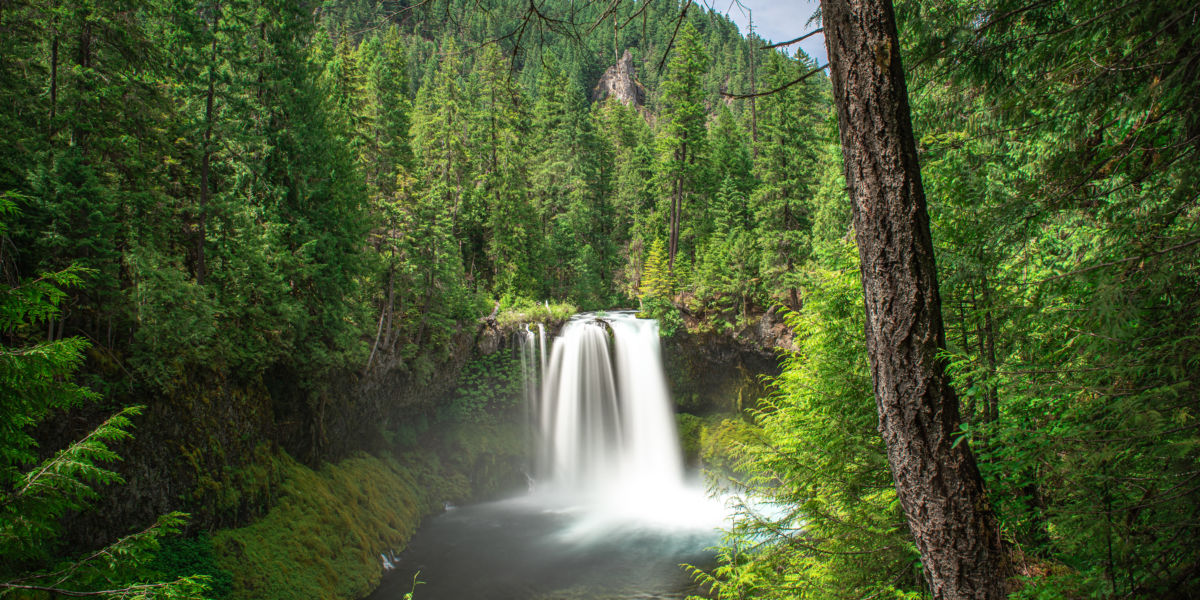
Oregon’s Parks Are Being Overrun with People Desperate to Escape COVID-19
The mass migration outdoors has contributed to a spike in the number of accidents in the state’s parks.

J.D. Simkins
The resurgent coronavirus hit Oregon this month in more ways than one. A record number 14 people died from COVID-related symptoms between July 10 and July 27, a number that included a 26-year-old. Oregon also reported 342 new cases over that span.
The spike in cases comes at a time when residents are flocking in droves to the state’s coastline and mountain ranges in a desperate attempt to escape the grim reality in which the nation is mired.
Camping and road-tripping are at an all-time high, according to recent data, as the dread of at-home confinement continues to turn America’s collective eyes toward the outdoors.
The Dyrt, a top-ranked campground search app by the iOS App Store and Google Play, has seen their user traffic climb 400 percent since this time last year. Paid memberships on the camping app, which boasts more than 15 million users, have also increased by 500 percent.
But this newfound desire to trade in deep-couch-sitting for high-altitude-mountaineering has had its detriments, and Oregon, with its range of stunning coastline, thick forests, and high desert regions, has been hit especially hard.
“On the Oregon Coast and west of the Cascades, we’re seeing a level of use well beyond a normal year,” Chris Havel, spokesman for the Oregon Parks and Recreation Department, told the Statesman Journal. “It’s like having the crowds you see for a holiday weekend, except all the time.”
One byproduct of the swarming throng has been an escalation in the number of accidents in the state’s national parks and forests. Likewise, the number of dispatched search-and-rescue efforts has also climbed.
Four people, including a 6-year-old, died this past week in four separate outdoors-related incidents.
Campsites in select areas, meanwhile, are now being booked out months in advance, previously remote areas are consistently occupied, untouched vegetation is being wiped out by campers wanting to establish new sites, and the gross inexperience of new campers who ignore the most elementary cleanup protocols has sullied once-pristine areas.
Further complicating preservation of these areas is that the mass outdoors migration is occurring when many of the state’s parks and popular sites remain closed due to COVID-19, making those areas that are open even more vulnerable.
As a result of the gathering hordes, officials in certain Oregon towns have requested that people stay away entirely. The city of Bend, for example, issued an order discouraging tourism travel through at least September 7.
“If you can hold back on your vacation to Bend, please do,” Bend Mayor Sally Russell said. “It will help us keep our businesses open and reopen our schools in the fall. We’re very worried about a spike here and are asking people to help.”
And as the Statesman Journal points out, the state’s current dry climates and warmer temperatures make Oregon especially susceptible to the looming threat of wildfires ignited by human error.
“We understand the concern and fear in our community surrounding this pandemic, and the council is working to balance different needs during this challenging time,” Russell added.
“Our community is struggling to stay safe and healthy, and I believe the actions we’ve taken today will help.”
If Oregon’s parks are any indication, the best action we all can take is to stay put.
